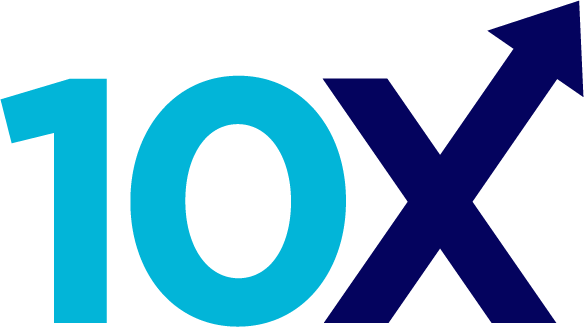It Was an Unusual Sight

Introduction: Last Friday morning, in San Francisco’s Financial District, I experienced something I didn’t expect, even for a city known for its surprises. As I walked down the steep incline of Clay Street, heading toward the Transamerica Pyramid, I suddenly heard a loud rushing sound behind me. Turning around, I saw something barreling down the hill at an alarming speed. What was it? A trash can. But not just any trash can—someone was riding it like a makeshift sled. This bizarre encounter got me thinking about how we, as fundraisers, communicate our mission and vision to our donors. Are we clear about where we’re going, or do we leave our supporters asking, “What was that all about?” The Importance of Vision: Your prospective donors need to know where you’re heading. They want to understand your vision, objectives, strategy, and plan. These elements are essential to your fundraising success. Just as the Allies in World War II had a clear vision and strategy for victory, your organization needs a compelling vision that guides your efforts. Do your donors know what success looks like for your organization? Do they understand the problems you’re trying to solve? Vision, Objectives, Strategy, and Plan: Let’s dicusse the importance of having a clear framework: Vision, Objectives, Strategy, and Plan. This framework is straightforward and easy to understand, yet many nonprofits fail to utilize it effectively. As a result, their fundraising efforts can stall, leaving them “stuck in low gear.” Consider how you communicate with your donors. Do you clearly articulate your organization’s vision? Do you outline the objectives you need to achieve that vision? Do you have a strategy that donors can get behind? And, most importantly, do you have a plan that details the steps you’ll take to reach your goals? Case Study: The National D-Day Memorial: A recent mailing I received from the National D-Day Memorial highlights both the strengths and weaknesses of nonprofit communication. The package arrived just before the 80th Anniversary of D-Day, brilliantly timed to capture attention. However, after reading through the materials, I was left wondering what my donation would actually achieve. While the letter shared moving stories and historical significance, it lacked a clear vision and objective. What major problem would my contribution help solve? What is the Memorial’s vision for the future? Your Homework: As we continue this discussion next week, I encourage you to think about a special project or initiative within your organization. Apply the Vision framework to this effort. Ask yourself: What is your vision—what is your North Star? What is your precise objective? Is it quantifiable and measurable? What strategy will you undertake to achieve your objective? What’s your plan? What are the detailed steps, spending plan, timeline, and key players involved? By answering these questions, you’ll lay the groundwork for a fundraising strategy that can unlock transformational growth. Conclusion: In the Book of Proverbs, it says, “Where there is no vision, the people perish.” Shared values, a shared vision, and complementary capabilities are the keys to success. Do your supporters share your vision? Do they know where you’re going? Let’s continue this conversation next week as we explore how to apply these lessons to your fundraising efforts.
There’s No Shortage of Money, Only a Shortage of Ideas

Introduction: As a fundraiser, does the idea that there’s no shortage of money, only a shortage of ideas, strike a chord with you? This insight, credited to the legendary nonprofit marketer Jerry Huntsinger, challenges us to rethink how we approach fundraising. In last week’s discussion, we explored why donors give, and the overwhelming response pointed to one key motivator: belief. The Power of Belief: According to Bob Russell, an experienced fundraiser who has conducted nearly 300 in-depth surveys of donors, belief remains the top reason why donors choose to give their largest gifts. When donors believe in an organization’s vision, mission, and effectiveness, they are more likely to contribute significantly. This belief is bolstered by other factors such as the organization’s effectiveness, outstanding people, and the strength of the relationship between the donor and the institution. Sharpening Your Case for Support: Understanding these motivators can help sharpen your case for support. By clearly communicating your organization’s vision, demonstrating effectiveness, and fostering strong relationships, you can inspire belief and, in turn, greater generosity. It’s not just about asking for money; it’s about showing donors that their investment will make a meaningful impact. No Shortage of Ideas: If belief is the key to unlocking donor generosity, then creativity and bold ideas are the tools that can help you stand out. As Jerry Huntsinger suggests, the real challenge in fundraising isn’t a lack of funds but a lack of innovative ideas. By dreaming audacious dreams and setting big goals, you can capture the imagination and support of your donors.
Remembering Jerry Panas: The World’s Greatest Fundraiser

Introduction: In the world of fundraising, few names carry as much weight as Jerry Panas. A beloved figure known for his unparalleled expertise and warm, encouraging manner, Jerry left an indelible mark on the field. When our mutual friend Malin Burnham proudly shared the news that Jerry had been named the number-one fundraiser in the world, it was no surprise to those of us who knew him. Jerry’s legacy is not only in the funds he helped raise but in the countless lives he touched and the wisdom he imparted. A Life Dedicated to Philanthropy: Jerry Panas spent decades teaching, mentoring, and inspiring fundraisers around the globe. His books, such as Power Questions, and his hundreds of “Rules You Need to Know” became essential resources for anyone in the field. Whether through his workshops, personal advice, or the written word, Jerry had a unique ability to make everyone he interacted with feel like they could achieve greatness in their fundraising efforts. Lessons from Jerry: One of Jerry’s most impactful lessons was the importance of viewing objections not as obstacles but as opportunities. As he often said, “People don’t want to give money away. They want to invest in bold, exciting, and inspiring ventures.” This perspective helped countless fundraisers reframe their approach, turning potential rejections into powerful conversations that led to greater support. Jerry was also a master of the subtle art of asking the right questions. He believed that knowing the right question to ask was far more important than having all the answers. This approach allowed him to engage with donors in a way that made them feel valued and understood, fostering deeper relationships and greater commitment to the causes he championed. A Final Visit: Earlier this year, I had the privilege of spending an afternoon with Jerry at his historic home in Ridgefield, Connecticut. Despite his declining health, Jerry’s mind was as sharp as ever. He shared invaluable advice on how to “build a movement of millions,” emphasizing the importance of donor retention, the power of small dinners with supporters, and the critical role of engaging women in fundraising. One piece of advice that stuck with me was Jerry’s reminder: “Raising money is expensive. But not raising money is even more expensive.” It was a simple yet profound statement that encapsulated his understanding of the fundraising landscape. A Lasting Legacy: Jerry Panas may no longer be with us, but his legacy lives on through the countless fundraisers he inspired and the millions of dollars raised for worthy causes. His wisdom, kindness, and generosity of spirit will be remembered by all who had the privilege of knowing him. If you have your own memories or stories about Jerry, I encourage you to share them. I’m compiling a collection of these stories to pass along to his family and colleagues, ensuring that Jerry’s impact continues to be felt for years to come.
How Are Your Skills of Persuasion?
Introduction: Do you feel confident when speaking to a group? Are you able to connect with your audience and persuade them to embrace your point of view? If not, you’re not alone. Effective communication is an essential skill for leaders, fundraisers, and anyone looking to influence others. But mastering this skill requires more than just speaking clearly—it’s about developing a “leadership voice” that resonates with your audience. The Power of a Leadership Voice: A “leadership voice” is more than just a strong, authoritative tone. It’s the ability to connect with your audience on a deeper level, to engage them emotionally, and to persuade them to take action. Whether you’re making a fundraising solicitation, giving a presentation, or leading a team, your ability to communicate effectively can make or break your success. Why Connection Matters: Connection is key to persuasion. When you speak, it’s not just about delivering your message; it’s about ensuring that your audience feels heard and understood. This two-way connection creates a rapport that makes your message more compelling and your leadership more effective. Learning from the Best: If you’re looking to enhance your communication skills, you might be interested in learning from Dr. Nick Morgan, one of America’s top communication coaches. Dr. Morgan combines classic arts of persuasion with modern neuroscience to help leaders communicate more effectively. His book, Power Cues: The Subtle Science of Leading Groups, Persuading Others and Maximizing Your Personal Impact, is highly regarded for its insights on leadership communication. Who Can Benefit: Fundraisers: Those involved in making solicitations can learn how to craft messages that resonate with potential donors. Leaders: Anyone in a leadership role can benefit from learning how to connect with and inspire their team. Activists: Individuals working to persuade others to take action on important causes will find these skills invaluable. Storytellers: Anyone interested in the art of storytelling as a tool for persuasion and connection. Join the Conversation: If you’re interested in improving your skills of persuasion, consider joining a special discussion with Dr. Nick Morgan. This is an opportunity to learn from one of the best and apply his insights to your own communication efforts. Conclusion: In today’s world, where effective communication is critical to success, developing a leadership voice is essential. By learning how to connect with your audience and persuade them to your point of view, you can become a more effective leader, fundraiser, and advocate.
Why Do Jingles Work So Well?

Introduction: We’ve all experienced it—those catchy tunes that get stuck in our heads and refuse to leave. Whether it’s a classic jingle from a well-known brand or an annoyingly persistent tune, these melodies have a way of embedding themselves into our memories. But why do jingles work so well, and what can we learn from them in the context of fundraising and marketing? The Power of Catchy Tunes: Jingles are more than just simple songs; they are powerful marketing tools designed to make a brand unforgettable. Think of some of the most memorable jingles: “The best part of waking up, is Folger’s in your cup.” “Like a good neighbor, State Farm is there.” “I am stuck on Band-Aid brand ’cause Band-Aid’s stuck on me!” These jingles work because they combine melody with message, making it easy for consumers to remember the brand. According to Steve Cone, author of Powerlines: Words That Sell Brands, Grip Fans, & Sometimes Change History, “Jingles done well are impossible to resist and remain in people’s memories from the first few hearings through the rest of their lives.” Why Jingles Stick: The reason jingles are so effective lies in their simplicity and repetition. They are designed to be easy to remember, often using rhymes, catchy phrases, and a simple melody. This simplicity, combined with repeated exposure, helps embed the message in our minds, making it more likely that we’ll recall the brand when we need it. Applying Jingles to Fundraising: Could a jingle, song, or even a catchy slogan help boost your fundraising efforts? Absolutely. In a crowded market, where silence is the greatest enemy of marketing success, having a memorable and engaging way to communicate your message can make all the difference. Whether it’s through a catchy tagline or a memorable phrase, the key is to create something that resonates and sticks with your audience. Learning from the Experts: For those interested in exploring this further, joining a discussion with marketing expert Steve Cone could be incredibly beneficial. Cone, who has led successful campaigns for brands like Apple and American Express, emphasizes the importance of using words and sounds effectively in marketing. His insights could help you develop a slogan or tagline that not only captures the essence of your brand but also sticks in the minds of your donors. Conclusion: Jingles work because they simplify complex messages into memorable tunes that stick with us long after we hear them. As fundraisers and marketers, we can learn a lot from this approach. By creating simple, memorable, and engaging messages, we can ensure that our cause remains top-of-mind for our supporters. Whether through a catchy jingle, a memorable slogan, or a well-crafted message, the goal is to make your brand unforgettable.
What Makes for an Effective Donor Communication?
Introduction: Crafting effective donor communication is both an art and a science. It’s easy to overcomplicate the process, but sometimes, the most impactful messages are those that are simple, direct, and heartfelt. Let’s explore what makes donor communication effective, drawing insights from successful fundraisers and experts in the field. The Power of Simplicity: A few Saturdays ago, I received a thoughtful thank-you note from Cathy Gillespie, President of Constituting America. It was a simple message of gratitude for my support. This small gesture made a big impression, reminding me of the importance of keeping communications straightforward and sincere. In fundraising, a well-timed, genuine thank-you can do wonders for donor relations. Key Elements of Effective Communication: When it comes to donor communication, there are a few essential elements to keep in mind: Urgency: Make your message timely and important. Donors need to feel that their support is needed right now. Clarity: Keep your message easy to understand. Avoid jargon and focus on what really matters to the donor. Emotional Appeal: Connect with donors on an emotional level. Stories are far more persuasive than statistics. Donor-Centric: Make the communication all about the donor. Show them how their contribution is making a difference. Avoiding Self-Centric Fundraising: Jeff Brooks, in his book The Fundraiser’s Guide to Irresistible Communications, warns against what he calls “Self-Centric Fundraising.” This is when fundraisers craft messages based on what they find moving, rather than considering the donor’s perspective. Brooks emphasizes that what resonates with the fundraiser might not resonate with the donor, especially when the fundraiser is more informed and emotionally invested in the cause. Instead, Brooks advises asking yourself: Is the message emotional? Is it clear and easy to understand? Is it simple and compelling? Applying These Lessons: To truly excel in donor communication, it’s important to internalize these principles and apply them consistently. The more you focus on the donor’s experience and perspective, the more likely you are to foster strong, lasting relationships that lead to increased support. Conclusion: Effective donor communication doesn’t need to be complex. By focusing on simplicity, clarity, emotion, and the donor’s perspective, you can create messages that resonate deeply and inspire continued support. As you refine your approach, consider revisiting resources like Jeff Brooks’ The Fundraiser’s Guide to Irresistible Communications to keep your skills sharp and your communications impactful.
Have Feasibility Studies Outlived Their Usefulness?

Introduction: Feasibility studies have long been a cornerstone of major fundraising campaigns, offering insights into potential donor support and providing a roadmap for success. But as times change, so do the tools and methods we rely on. This raises an important question: have feasibility studies outlived their usefulness? The Case for Feasibility Studies: Traditionally, a feasibility study, conducted by an outside consultant, has been seen as a way to gauge the likelihood of a campaign’s success before fully committing to it. These studies typically involve confidential interviews with key prospects to assess their willingness to support a campaign and to identify any potential obstacles. Proponents argue that despite their cost, feasibility studies can save organizations from launching campaigns doomed to fail. They provide a reality check, revealing how donors truly perceive the organization and its proposed initiatives. As Robert Stuber, an experienced fundraiser, pointed out, “Feasibility studies are cheaper than launching a campaign that is doomed!” The Growing Criticism: However, not everyone is convinced that feasibility studies are still effective. Critics argue that these studies have become formulaic, predictable, and, in some cases, even disingenuous. Some donors feel they are being used as a “trick” to gain access to their wallets under the guise of research. Moreover, there’s a growing sentiment that feasibility studies no longer reveal anything new—especially in an era where donor fatigue is increasingly prevalent. A significant concern is the cost. Feasibility studies are expensive, and in an environment where fundraising dollars are tight, many wonder if this investment is worth it. Is it still prudent to conduct a feasibility study when donors are growing weary of them, and the insights they provide are becoming less valuable? Is There a Better Way? Given these criticisms, it’s worth asking: is there a better way to assess the viability of a campaign without relying on a traditional feasibility study? Some fundraisers suggest experimenting with smaller, more targeted initiatives to gauge donor interest before launching a full-scale campaign. Others recommend using data-driven approaches to understand donor behavior and preferences more accurately. Conclusion: While feasibility studies have their place, it’s clear that they are not without their drawbacks. The challenge for today’s fundraisers is to determine whether these studies still offer value or if alternative methods could be more effective in today’s fundraising landscape. The debate is far from settled, and as fundraising strategies continue to evolve, so too must our tools and approaches.
The Power of Benefit: What Can Fundraisers Learn from Biden’s Marketing Challenge?

Introduction: When it comes to fundraising, the principles of marketing are more relevant than ever. A key component of any successful marketing strategy is the ability to clearly articulate the benefits of your offer. This concept doesn’t just apply to selling products—it’s crucial in securing support for your cause as well. Today, we’ll explore how a current political scenario provides a valuable lesson in the importance of benefit-focused messaging and what we can learn from it to enhance our fundraising efforts. The Marketing Dilemma: Biden’s Struggle with Messaging Recently, political commentators have highlighted a significant issue with President Joe Biden’s flagship legislative effort, often referred to as “the reconciliation bill” or “the Build Back Better Act.” Despite its ambition and potential impact, the bill has faced criticism not just for its content, but for its marketing—or lack thereof. The benefits of the bill have not been clearly communicated to the public, leading to confusion and lackluster support. This scenario is a perfect case study for us as fundraisers. It underscores the necessity of making sure our supporters—like Biden’s potential voters—understand precisely what they stand to gain by backing our initiatives. Why Benefit Matters in Fundraising Benefit is the cornerstone of any effective fundraising appeal. Your donors need to know exactly what their contribution will achieve. The more specific, clear, and compelling you can make this benefit, the more likely they are to support your cause. Richard Viguerie, a pioneer in direct marketing, emphasizes that your vision must be grand, but the benefit you offer should be specific and easily understood. It’s about keeping things simple yet powerful—what’s in it for them? Applying Benefit-Driven Messaging to Fundraising So, how can we apply this principle to our fundraising efforts? Here are a few strategies: Clarify the Impact: Make sure your donors know exactly what their contribution will do. Will it fund a specific project? Help a particular group of people? Provide a tangible outcome? Spell it out. Personalize the Benefit: Tailor your message to resonate with your donor’s values and priorities. Why should this cause matter to them personally? Connect the dots between their values and the impact of their donation. Simplify Your Message: Avoid jargon and overly complex explanations. Just like Biden’s bill needs a clearer name, your fundraising ask needs straightforward, impactful language that anyone can understand. Highlight the Urgency: If your initiative addresses an urgent need, make that clear. Why is now the time to act? Urgency can often tip the scales in your favor. A Thought Exercise: Rebranding the “Build Back Better Act” Let’s take a page from the political playbook and apply it to our own fundraising efforts. Imagine you were tasked with rebranding Biden’s bill. How would you simplify the message? What benefits would you highlight? How would you make it clear and compelling? This exercise isn’t just hypothetical—it’s a valuable way to sharpen your skills in crafting benefit-driven messages for your own campaigns. Conclusion: The Blueprint for Benefit In fundraising, as in politics, a well-communicated benefit can be the difference between success and failure. By ensuring that your donors understand exactly what their support will achieve, you can create more effective, compelling fundraising campaigns. As you plan your next appeal, take a moment to consider: Is the benefit obvious? Is it compelling? If not, it might be time to rethink your approach.
Is There a Fundraising Blueprint?

Introduction: Fundraising can often feel like navigating uncharted waters. Whether you’re asking for a modest donation or a significant gift, the process can be daunting without a clear roadmap. But what if there was a blueprint—a step-by-step guide that could help you structure your ask effectively? Enter William Sturtevant’s comprehensive guide to major gift fundraising, The Artful Journey. Sturtevant builds on the wisdom of Aryeh Nesher, a seasoned fundraiser, to provide a detailed outline for making a successful fundraising ask. Let’s explore this framework and how it can serve as your blueprint to fundraising success. The Blueprint: Nesher’s Framework for a Successful Ask In The Artful Journey, Sturtevant introduces us to Aryeh Nesher’s fundraising framework, which he witnessed during one of Nesher’s seminars. Nesher, known for raising funds for Israel at the request of Golda Meir, developed a method that is both structured and adaptable. Sturtevant adds his touch by introducing a fifth section to Nesher’s original four-part framework. Here’s a breakdown of this blueprint: Preliminaries (Know Thy Prospect) Before you even begin the formal ask, understanding your prospect is crucial. This phase involves researching and scripting the solicitation to ensure it’s tailored to the prospect’s interests and capacity. A well-prepared preliminary phase sets the stage for a more effective ask. Opening or Introduction (10% of Allotted Time) The introduction is your opportunity to set the tone. In just a few minutes, you need to build rapport and establish the purpose of the meeting. This brief segment is critical in creating a positive first impression. Presentation (40% of Allotted Time) This is where you present your case. Focus on the impact that the donation will have and why it’s essential now. This segment should be informative yet engaging, highlighting the urgency and significance of the cause. Negotiation (40% of Allotted Time) Once the presentation is made, the discussion shifts to negotiation. This is a collaborative process where you work with the prospect to align their interests with your organization’s needs. Be prepared to address questions, concerns, and any potential objections. Closing (10% of Allotted Time) The closing is where you formally ask for the gift. It’s a decisive moment that should feel like a natural progression of the conversation. A strong close leaves the prospect with a clear understanding of the next steps. Applying the Blueprint to Your Fundraising Efforts The beauty of Nesher’s framework, as adapted by Sturtevant, is its flexibility. You can expand or contract the sections depending on the complexity of the ask, the experience of your team, and the magnitude of the gift. This structure not only keeps the solicitation focused and concise but also allows for personalization based on the prospect’s unique profile. Conclusion: Building on the Blueprint Is this framework helpful to you? Over the next few weeks, we’ll dive deeper into each section of this outline, exploring strategies and tips to make each phase of the ask as effective as possible. By breaking down the process, you can approach each step with confidence, knowing you have a proven blueprint to guide you.
Remember How You Were Treated? The Power of Exceptional Stewardship in Fundraising

Introduction: We all have those unforgettable customer service stories—both good and bad. How we are treated leaves a lasting impression, shaping our perception of a brand. In the world of fundraising, this principle is just as crucial. Creating a strong donor experience can turn your supporters into lifelong advocates. Today, let’s explore how exceptional stewardship can elevate your fundraising efforts and make your donors feel valued beyond their contributions. The Chick-fil-A Example: A Lesson in Customer Service One of the standout examples of customer service for me comes from Chick-fil-A, renowned as America’s favorite restaurant chain. On a particularly hectic Saturday, my wife and daughter experienced a delay with their order. Instead of brushing off their concerns, a Chick-fil-A manager went above and beyond—handing them $50 in cash to make up for the inconvenience. This act of kindness not only resolved the issue but also turned us into loyal advocates of the brand. This story underscores the power of a strong brand: when your customers become your fans, they do your marketing for you. Applying Customer Service Principles to Fundraising In fundraising, the relationship with your donors should be nurtured with the same care and attention as customer service in a top-tier business. It’s not just about securing the next donation but building a lasting relationship. To do this, you need to integrate gratitude, stewardship, and cultivation into your strategy. Strategies for Exceptional Donor Stewardship Prompt and Meaningful Thank-You Notes: Send a personalized thank-you note within 48 hours of receiving a gift. This simple act shows that you value your donors and their contributions. Regular Progress Reports: Keep your donors informed with regular updates on how their contributions are making a difference. Whether through succinct memos or detailed reports, this transparency builds trust. Personalized Notes from Beneficiaries: Include heartfelt messages from those directly impacted by the donations. This adds a personal touch and reminds donors of the tangible difference they are making. Engaging Newsletters: Use newsletters to share successes, complete with photos and captions that tell the story of your impact. This keeps donors connected to your mission and reinforces their decision to support you. Building a Strong Brand Through Stewardship Just like Chick-fil-A’s focus on customer satisfaction, your approach to donor stewardship should go beyond the transaction. By delivering more than just a smart request for funds—by offering an exceptional experience—you set your organization apart from the competition. This is key to what we refer to as Donor Lifetime Value, and it’s the foundation of transformational fundraising success. Conclusion: The Value of Raving Fans Turning your donors into raving fans requires more than just soliciting donations. It’s about how you treat them after the gift is made. Exceptional stewardship not only enhances your brand but also ensures that your donors will continue to support your cause for years to come.

